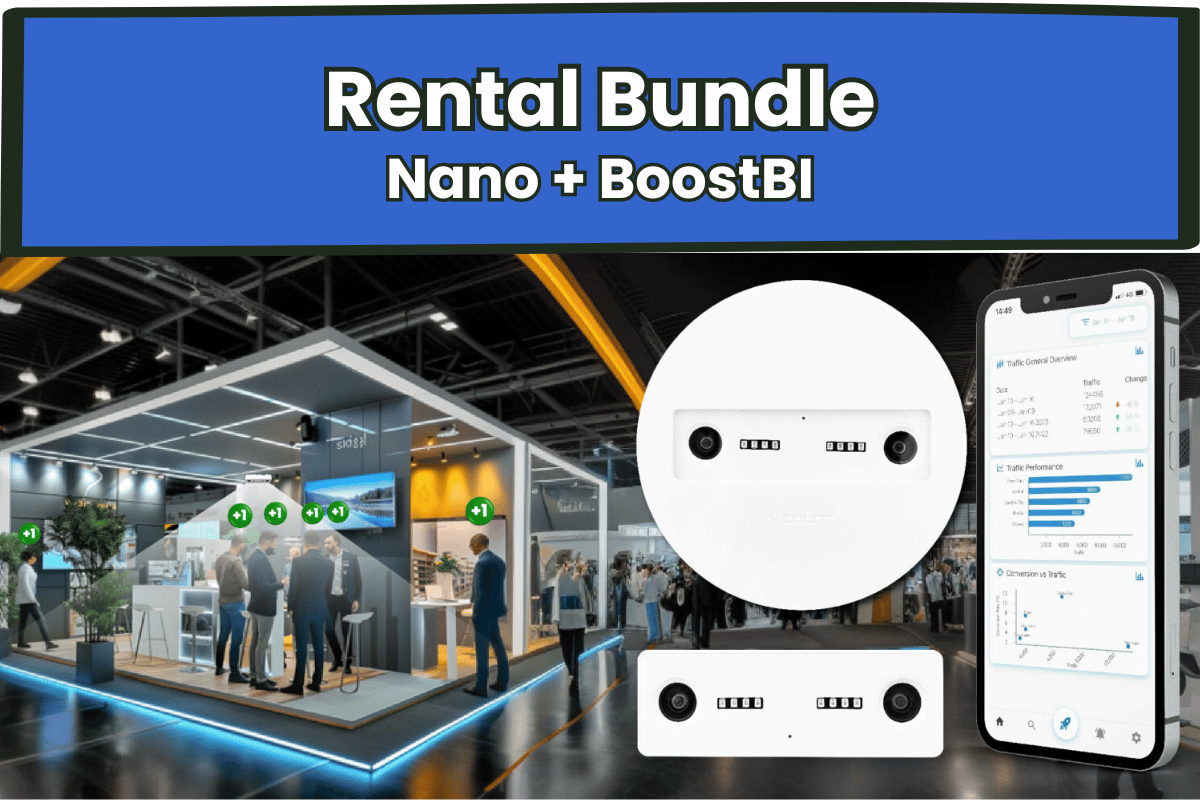In 2025, retail is all about connecting online and offline shopping to create a seamless customer journey. Customers might see an ad on their phone, visit a store, or buy online later, and retailers need to know if these efforts pay off. Measuring omnichannel ROI (Return on Investment) helps retailers see how much money they make from blending online and offline strategies compared to what they spend. This blog explains how to use retail analytics, people counting, and other tools to track foot traffic, conversion rates, and customer behavior to calculate omnichannel ROI simply and effectively.
What Is Omnichannel ROI?
Omnichannel ROI measures how much profit you earn from combining online and offline shopping efforts compared to the costs. For example, if you spend $10,000 on ads, staff, and retail analytics tools and earn $50,000 in sales across your website and stores, your ROI shows if the investment was worth it. By tracking retail data, retailers can see how online campaigns drive foot traffic or how in-store promotions boost online sales, ensuring every dollar spent brings value.
Why Is Measuring Omnichannel ROI Important?
Retailers in 2025 need to know which strategies work. Real-time retail analytics for omnichannel strategies show how customers move between online and offline channels. For instance, a customer might browse online, visit a store to try a product, and buy later on your website. Without data, it’s hard to know if your online ads or in-store displays are driving sales. Measuring ROI helps you:
- Focus on strategies that increase conversion rates.
- Spend marketing budgets wisely to improve storefront conversion.
- Boost customer satisfaction by creating a smooth shopping experience.
- Ensure data privacy while collecting useful insights.
Data shows that retailers with strong omnichannel strategies can increase sales by 15-20% and improve customer satisfaction by 25%.
How Can Retail Analytics Help?
Retail analytics tools collect data from online and offline channels to track customer behavior, visitor flow, and store performance. These tools include:
- People Counting: Counts how many people enter stores, helping measure foot traffic from online campaigns.
- Demographic Analysis: Identifies customer age or gender for targeted marketing, ensuring data privacy with anonymous tracking.
- Sales Tracking: Connects online and in-store sales to see which channels drive conversion rates.
- Heatmap Analytics: Shows busy areas in stores to optimize layouts and boost store performance.
By combining these, retailers can see how online and offline efforts work together to drive sales and calculate ROI.
Step-by-Step Guide to Measure Omnichannel ROI
Here’s a simple way to measure your omnichannel ROI using retail foot traffic analytics solutions and other tools:
- Track Cross-Channel Data
Use retail analytics to monitor how customers move between online and offline channels. For example:
- Online to Offline: Track if online ads increase foot traffic. A tool like a people counting sensor can show if store visits rise after an online campaign.
- Offline to Online: See if in-store promotions (like QR codes) drive online sales. Analytics platforms can link in-store actions to website purchases.
- Example: A clothing store runs an online ad for a sale. Retail foot traffic analytics solutions show a 20% increase in store visits, and POS data shows 15% more sales.
- Calculate Your Costs
List all expenses for your omnichannel strategy, including:
- Marketing: Online ads, social media campaigns, or in-store signs.
- Technology: GDPR-compliant retail analytics software, people counting sensors, or heatmap analytics for retail store layout.
- Staffing: Extra workers for busy times based on queue management data.
- Example: A retailer spends $5,000 on ads, $3,000 on analytics tools, and $2,000 on staff, totaling $10,000.
- Measure Revenue
Use retail data to track sales from all channels:
- In-Store Sales: Check POS data for purchases linked to foot traffic.
- Online Sales: Track website sales, especially those tied to in-store promotions (e.g., customers using in-store coupons online).
- Example: The clothing store earns $40,000 in-store and $15,000 online after the campaign, totaling $55,000 in revenue.
- Calculate ROI
Use this formula:
ROI = ((Revenue – Costs) / Costs) * 100
- Example: ($55,000 – $10,000) / $10,000 * 100 = 450% ROI.
This means for every dollar spent, the retailer earned $4.50 in profit.
- Analyze and Improve
Look at the data to see what worked:
- Did storefront conversion increase after new window displays?
- Did queue management reduce wait times and boost customer satisfaction?
- Did retail demographic analysis for better marketing improve sales for specific groups?
Adjust strategies based on these insights to get even better ROI next time.
How Does Foot Traffic Impact ROI?
Foot traffic is a big part of omnichannel ROI. People counting tools show how many people visit stores and when. For example:
- An online ad might bring 500 extra visitors to a store, increasing storefront conversion by 10%.
- Heatmap analytics can show if these visitors spend time near promoted products, leading to more sales.
By tracking foot traffic, retailers can see if online campaigns are worth the cost. Data shows that stores measuring foot traffic can boost sales by 10-15% by aligning marketing with peak visit times.
Why Does Customer Behavior Matter?
Understanding customer behavior helps retailers make smarter choices. Retail demographic analysis for better marketing shows who shops and what they like. For example:
- A store learns most visitors are young women and promotes trendy clothes online and in-store.
- Visitor flow data shows customers linger near electronics, so the store moves high-value items there.
This personalization increases conversion rates and makes the shopping experience better, driving higher ROI.
How Can Queue Management Boost ROI?
Long lines hurt customer satisfaction and sales. Queue management tools track wait times and help retailers add staff when needed. For example:
- A supermarket sees long lines at 6 PM and schedules more cashiers, cutting wait times by 3 minutes.
- Data shows that shorter lines increase conversion rates by 5% and reduce cart abandonment.
By improving the customer journey, queue management helps retailers earn more from each visitor, boosting ROI.
Why Is Data Privacy Key?
Customers want their information safe. GDPR-compliant retail analytics software ensures data is anonymous, building trust. Retailers using privacy-focused tools see 20% higher customer loyalty, which supports long-term ROI. For example, people counting sensors track visitor flow without storing personal details, keeping data secure while providing insights.
What’s Next for Omnichannel ROI?
In 2025, retail technology will get better at tracking customer behavior and store performance. AI tools will predict trends, like which products will sell best online or in-store. Heatmap analytics for retail store layout will show how store changes affect sales, and real-time retail analytics for omnichannel strategies will make ROI calculations faster and more accurate. Retailers who use these tools will stay ahead, creating better shopping experiences and higher profits.
Conclusion
Measuring omnichannel ROI helps retailers see if their online and offline strategies are working. By using retail analytics, people counting, and queue management, businesses can track foot traffic, conversion rates, and customer behavior to calculate profits. Simple steps like monitoring costs, measuring sales, and analyzing data make it easy to improve the customer journey and boost store performance. In 2025, retailers who use retail data wisely will create seamless shopping experiences and see strong returns on their investments.






